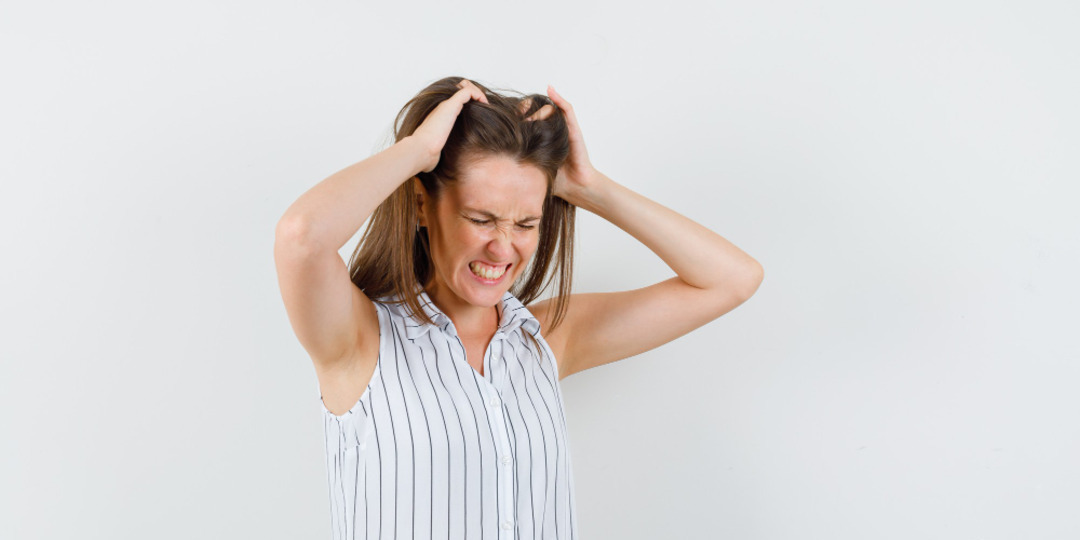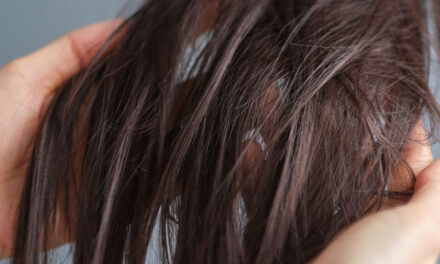
Hygral fatigue is a lesser-known yet crucial aspect of hair care, especially for those with high-porosity hair. It occurs when the hair cuticle and hair shaft undergo stress due to too much moisture.
This condition can make wet hair overly elastic, leading to damage. Understanding hygral fatigue is vital for maintaining healthy hair porosity and preventing damage in low-porosity hair and high-porosity hair.
What is Hygral Fatigue?
Hygral fatigue refers to the damage caused by the repeated swelling and contracting of the hair fibers. This happens when the hair absorbs and then loses water, a process that’s particularly damaging for high-porosity hair.
The continuous cycle of repeated swelling and drying can weaken the hair follicle, making the hair more prone to damage. Over time, this can lead to increased brittleness, susceptibility to breakage, and a reduced ability to maintain healthy hair structure and appearance.
4 Signs of Hygral Fatigue

Typical indicators of hygral fatigue you might spot:
1. Your Hair Keeps Breaking
When dealing with hygral fatigue, your hair tends to break more quickly due to the weakening effects of over-moisturizing. This condition affects the hair shaft, causing it to swell and weaken from excessive moisture, which leaves the hair fragile and prone to breakage.
During everyday activities like brushing or styling, you might notice more hair breaking off than usual, indicating that the hair shaft can’t withstand regular stress. This increased breakage is a common problem for everyone’s hair when hygral fatigue sets in, showing that the hair’s natural resilience and strength are compromised.
2. You’re Experiencing Dull and Limp Hair
Hygral fatigue can also cause your hair to lose its natural sheen, leading to a dull and limp appearance. This happens because the hair’s internal structure is affected by excessive moisture, which weighs down the hair and removes its natural volume and bounce.
Hair that once had life and body might begin to hang flat and appear lifeless, a sign that hygral fatigue affects how your hair stretches and responds to styling. Such changes in texture and appearance highlight the need for a change in hair care to combat the effects of hygral fatigue.
3. There is No Elasticity in Your Hair
When human hair loses its elasticity, it’s a significant symptom of hygral fatigue. This happens because the hair, especially when hair soaking wet, becomes weakened from moisture overload.
The natural ability of hair to stretch and return to its shape is crucial, but with hygral fatigue, this elasticity diminishes, leaving the hair prone to breakage and damage. This lack of flexibility, often a result of hygral fatigue, indicates that the internal structure of the hair follicles has been compromised, necessitating a change in the hair care routine.
4. Gummy Texture When Wet
Experiencing a gummy texture in your hair, mainly when it’s wet, is a telltale sign of hygral fatigue. This change in texture is due to the hair follicles absorbing too much water, leading to a condition known as moisture overload.
When hair soaking wet feels gummy or overly soft, it indicates that the hair’s structure is weakened, a common consequence of hygral fatigue in human hair. Addressing this issue is vital, as it suggests that your hair care practices might contribute to an excessive moisture problem.
What Causes Hygral Fatigue?
Hygral fatigue arises from the constant swelling and shrinking of hair follicles due to holding onto too much moisture. When your hair expands beyond 30 percent of its natural length, it can suffer irreversible damage.
Below are various factors that might lead to the onset of hygral fatigue:
1. Over Moisturized Or Over Hydrated Hair
Hygral fatigue often starts when there is excessive moisture in the hair, particularly in high-porosity hair, where the hair absorbs water too quickly. Over-hydration causes hair follicles to swell and weaken, damaging the hair shaft and hair cuticle.
When hair shafts absorb more water than they can handle, they become overly soft and elastic, leading to moisture overload and subsequent damage, especially during styling or brushing.
2. Loss Of Necessary Oils In Hair
The loss of essential oils, vital for maintaining hair follicles’ health, can lead to hygral fatigue. Harsh hair care products can strip these oils, leaving the hair cuticle vulnerable and unprotected.
This lack of natural oils causes the hair to become dry and brittle, increasing the risk of damage from excessive moisture.
3. Damage To Hair
Hair already weakened by styling, coloring, or chemical treatments is more susceptible to hygral fatigue. This pre-existing damage compromises the integrity of the hair shaft and hair cuticle, making the hair more vulnerable to further harm from moisture overload.
The weakened state of the hair makes it less able to resist the damaging effects of swelling caused by water absorption.
4. Imbalanced PH Levels
An imbalance in the pH levels of hair care products can significantly impact the health of your hair, leading to hygral fatigue. Products with incorrect pH levels can disrupt the natural balance of the hair cuticle, weakening it and making it more prone to damage from excessive moisture.
Maintaining the correct pH balance is crucial to protect the hair shaft and prevent the onset of moisture overload.
5. Genetic Causes
Sometimes, the tendency to develop hygral fatigue is rooted in genetics, meaning it can be a natural characteristic of your hair due to inherited traits. People with specific hair types, like naturally porous or fine hair, are more prone to experiencing hygral fatigue.
This genetic predisposition means their hair follicles naturally absorb and retain more water, making them more susceptible to damage from moisture. Recognizing this genetic aspect can help tailor a hair care routine that addresses these specific needs and minimizes the risk of hygral fatigue caused by genetic factors.
Treatments To Correct Hygral Fatigue Issue
When your damaged hair is affected by hygral fatigue or other causes, it becomes more vulnerable to additional harm. Unfortunately, you cannot undo the existing damage to damaged hair. The best approach is to minimize future damage while waiting for healthy hair to grow out.
Alter Your Hair Care Products and Routine
If your hair is suffering from over-moisturization, consider scaling back on moisturizing shampoos and conditioners. Reducing the frequency of hair washing can also be beneficial, as it helps preserve the hair’s natural oils, which act as a protective barrier.
Minimize Other Damaging Factors
Limiting additional sources of damage is crucial in preventing further deterioration of your hair’s condition. Common culprits of hair damage include:
- Harsh chemical treatments
- Rough towel drying
- Perming
- Frequent hair straightening
- Excessive blow drying
- Regular use of hair dyes or bleach
- Exposure to chlorine in swimming pools
Trim Damaged Ends
Hair, unlike skin, cannot heal itself from damage. Patience is essential as you wait for healthy hair to replace the damaged sections. Regular trims are advisable, especially to remove split ends, which can prevent further damage from traveling up the hair shaft to healthier areas.
How To Prevent Hygral Fatigue

Damaged hair is more prone to hygral fatigue as its protective cuticle layer becomes porous, making it vulnerable. By minimizing the damage to your hair, you can lower the risk of experiencing hygral fatigue.
1. Shampoo Gently
It’s essential to use a gentle approach when shampooing your hair to prevent hygral fatigue. Harsh shampoos can strip away natural oils and moisture, leaving the hair vulnerable to damage.
Choose mild, sulfate-free shampoos that cleanse without removing essential moisture and gently massage your scalp and hair to avoid causing stress to the hair follicles. This approach helps maintain the hair’s natural moisture balance, reducing the risk of hygral fatigue.
2. Wear a Swim Cap
Wearing a swim cap while swimming is an effective measure to prevent hygral fatigue. The cap acts as a barrier against chlorinated water, which can lead to a moisture imbalance in the hair and helps in keeping the hair dry and protected.
By minimizing the hair’s exposure to water, you reduce the chances of hair swelling and weakening, which are common issues in hygral fatigue.
3. Brush Your Hair Properly
Proper hair brushing techniques play a crucial role in preventing hygral fatigue. Use a wide-tooth comb or a brush with soft bristles to gently detangle your hair, starting from the ends and working your way up to the roots.
This method minimizes pulling and stress on the hair, helping to avoid unnecessary breakage and damage. Regular, gentle brushing maintains the hair’s integrity and helps prevent the weakening of the hair structure that leads to hygral fatigue.
4. Use Shampoo with a Low pH.
Choosing a shampoo with a low pH is beneficial for preventing hygral fatigue, as it helps maintain the hair’s natural acidity and protect the hair cuticle. A balanced pH level in Shampoo ensures that the hair cuticle remains closed and healthy, which keeps the hair strong and less prone to moisture-related damage.
Using a low-pH shampoo contributes to the overall health of the hair, reducing the likelihood of hygral fatigue and preserving the hair’s natural strength and resilience.
5. Use Coconut Oil as a Pre-wash
Applying coconut oil to your hair before washing is an effective method to prevent hygral fatigue. Coconut oil can penetrate the hair shaft, providing a protective layer that reduces the amount of water the hair absorbs during washing.
This pre-wash treatment helps maintain the hair’s natural protein balance, preventing the hair cuticle from swelling and becoming damaged. Regularly using coconut oil as a pre-wash can significantly reduce the risk of hygral fatigue, keeping your hair strong and healthy while preserving its natural moisture balance.
Bottom Line
Understanding and preventing hygral fatigue is vital for maintaining healthy hair. Regardless of your hair type, whether straight hair or curly, it’s crucial to balance moisture and protein to protect the hair follicles and hair cuticle from damage.
By implementing these care and prevention tips, your hair can remain resilient, strong, and lustrous. Explore our Vitamins Revive products, specifically formulated to rejuvenate and protect your hair from hygral fatigue.
Our carefully curated selection includes nutrient-rich treatments and supplements that infuse your hair with essential vitamins and minerals, promoting strength and resilience. Start your journey towards healthier, more vibrant hair today by choosing from our Vitamins Revive collection, designed to restore balance and vitality to your locks.









